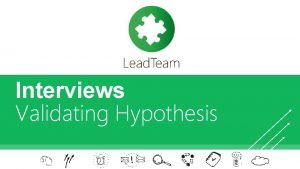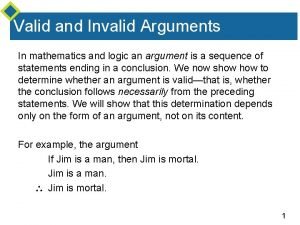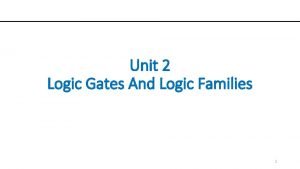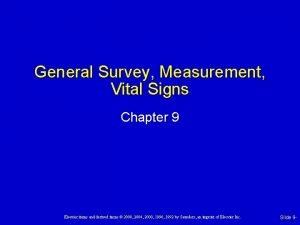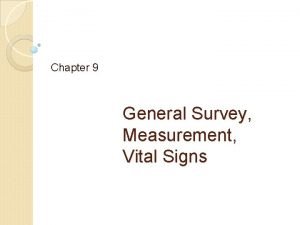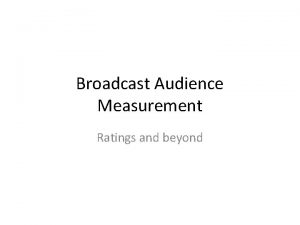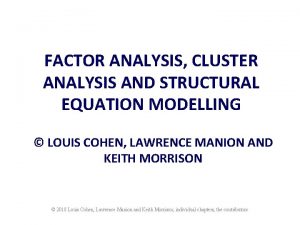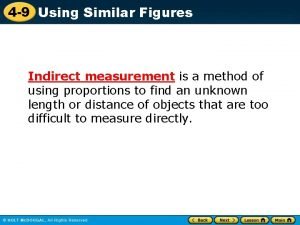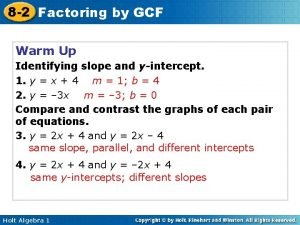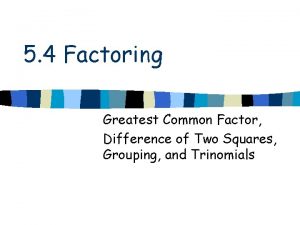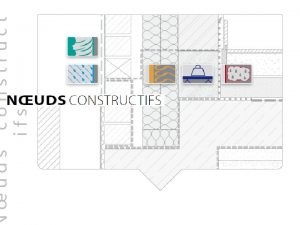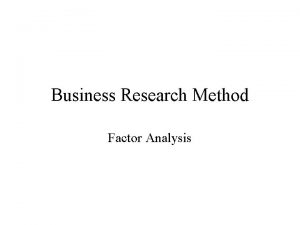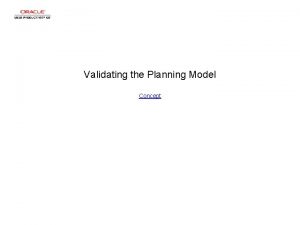Construct Measurement Using Factor Analysis Creating Validating Survey











- Slides: 11

Construct Measurement Using Factor Analysis: Creating & Validating Survey Protocols Dr. Richard E. Cleveland, Ph. D College of Education Counselor Education Program Assistant Professor, Leadership, Technology & Human Development Food World Member, 2014 -present

Keep it Brief Richard… • Research Interests • Validating Protocols for “New” Populations • Considering Assumptions [NOTE: not an exhaustive listing]

Helping Students Flourish • Resiliency �Positive Psychology (Lopez et al. , 2009) • Spirituality �Professional Recognition (ACA, ASCA, CACREP) �Conceptualizing Spirituality ▫ Internal & Possibly Secular (Noddings, 2006) ▫ Religious (Fowler, 1981) ▫ constructivist (Phillips, 1995) • Spirituality & General Well-Being �Developmental/Psychological (Kim & Esquivel, 2011)

Holder, Coleman & Wallace (2010) • Correlations between Spirituality, Religiosity & Happiness in Children ▫ ▫ 3 Happiness (FACES, OHQ-SF, SHS) 1 Spirituality (SWBQ) 1 Religiosity (PBS) 1 Temperament (EAS)

So What Did Richard Do? • “New” Populations ▫ Instruments Created/Administered with Adult Samples (spirituality, subjective well-being, temperament, etc. ) ▫ Instruments Created/Administered with English Samples (mindfulness, e. g. , CAMM-K) • “New” Latent Variables ▫ School Counselor PK-12 CGCP Implementation

Assumptions Richard Made 1. 2. 3. 4. EFA versus CFA PAF versus PCA Skewness & Kurtosis Parameters Parallel Analysis

EFA versus CFA • Confirmatory Factor Analysis (CFA) investigates hypotheses about identified factors and their relationships with each other. • Exploring a construct (e. g. , latent variable) and the contributing factor(s) within requires EFA. (Field, 2009; Nunnally & Bernstein, 1994; Pedhazur & Schmelkin, 1991; Pett et al. , 2003)

PAF vs. PCA • Underlying Mathematics (Fabrigar & Wegener, 2012; Field, 2009; Tabachnick & Fidell, 2007) ▫ PAF correlations among variables ▫ PCA reducing variables to a smaller set • Variance (Fabrigar & Wegener, 2012; Tabachnick & Fidell, 2007) ▫ PAF analyzing shared variance only ▫ PCA no distinction between common/unique variance • Theory (Fabrigar & Wegener, 2012; Gall, Gall & Borg, 2007) ▫ PAF parameter estimates generalized beyond sample ▫ PCA parameters fit to sampling at core level

Skewness & Kurtosis • EFA Parameters ▫ Skewness <│2│ ▫ Kurtosis <│7│ (Fabrigar & Wegener, 2012)

Parallel Analysis • Determining the appropriate number of factors ▫ Random data generated in a parallel (similar) model ▫ Non trivial components in the model influence both raw & random data ▫ Eigenvalues: Raw > Random ▫ SPSS Syntax O’Connor (2000) (Fabrigar & Wegener, 2012; Fabrigar, Wegener, Mac. Callum, & Strahan, 1999; Hayton, Allen, & Scarpello, 2004; O’Connor, 2000)

Thank You rcleveland@georgiasouthern. edu @Richie. Kinz http: //richardcleveland. me
 Subtitle integration
Subtitle integration How to construct a survey
How to construct a survey Argument forms in logic
Argument forms in logic Not gate boolean expression
Not gate boolean expression 叫叫abcd
叫叫abcd Body structure general survey
Body structure general survey Normal pediatric vitals by age
Normal pediatric vitals by age Radio audience measurement survey
Radio audience measurement survey Kmo and bartlett's test interpretation
Kmo and bartlett's test interpretation Similar figures and indirect measurement
Similar figures and indirect measurement Factoring examples
Factoring examples Factor out the greatest common factor
Factor out the greatest common factor
